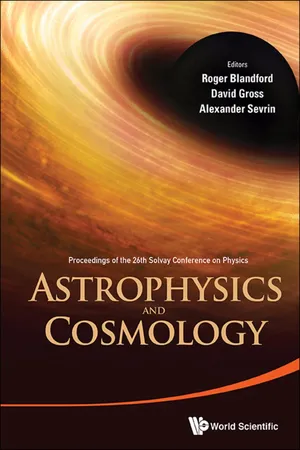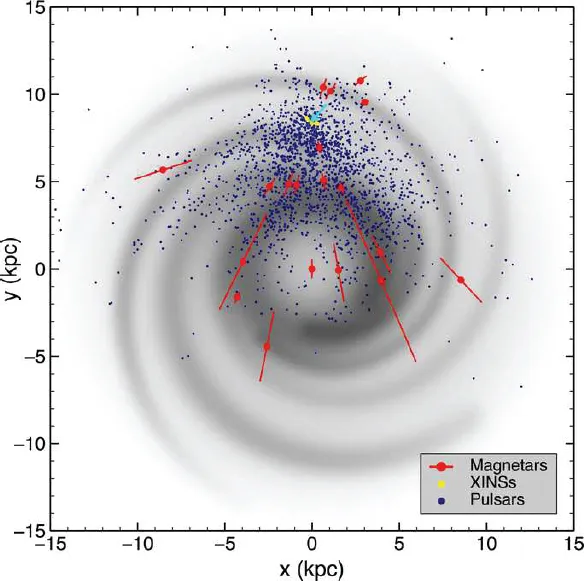![]()
Session 1
Neutron Stars
Chair: Ed van den Heuvel, Universiteit van Amsterdam, the Netherlands
Rapporteurs: Vicky Kaspi, MCGill University, Canada and Michael Kramer, Manchester University, UK
Scientific secretaries: Nicolas Chamel, Université Libre de Bruxelles, Belgium and Hans Van Winckel, KULeuven, Belgium
E. van den Heuvel We heard from Roger Blandford earlier today that we all love neutron stars and we do so because they are so extreme. To paraphrase what Melvin Ruderman once said: if you compress 400 000 times the mass of the Earth in a ball more or less the size of Brussels, you will have some idea of what the density in a neutron star is; to put it differently: the volume of a raindrop of neutron-star material contains as much matter as of all the seven billion people in the world together. So neutron stars are very extreme objects, with fantastic extreme physics involved. Also, as you will hear from the second rapporteur, they are extremely useful objects to test relativity and physical laws in general. They are also useful because we would not have been here if there had not been neutron stars. Their formation is so energetic that all the rest of the star is kicked out, including all the heavy elements produced inside the progenitor star. These elements are injected into the interstellar medium from which new stars form and around one of these stars, our planetary system formed as well. We therefore owe our existence to neutron stars. Now, I am not going to talk much more about that. We have two wonderful rapporteurs, and I first would like to hand the floor to Vicky Kaspi, who will talk about radio pulsars and the neutron star zoo, summarizing the latest knowledge about neutron stars. After that the second rapporteur, who is Michael Kramer. He will talk about the radio sky as a laboratory for fundamental physics: neutron stars, binary pulsars and also fast radio transients.
Rapporteur Talks by V. Kaspi and M. Kramer: Radio Pulsars: The Neutron Star Population & Fundamental Physics
Abstract
Radio pulsars are unique laboratories for a wide range of physics and astrophysics. Understanding how they are created, how they evolve and where we find them in the Galaxy, with or without binary companions, is highly constraining of theories of stellar and binary evolution. Pulsars’ relationship with a recently discovered variety of apparently different classes of neutron stars is an interesting modern astrophysical puzzle which we consider in Part I of this review. Radio pulsars are also famous for allowing us to probe the laws of nature at a fundamental level. They act as precise cosmic clocks and, when in a binary system with a companion star, provide indispensable venues for precision tests of gravity. The different applications of radio pulsars for fundamental physics will be discussed in Part II. We finish by making mention of the newly discovered class of astrophysical objects, the Fast Radio Bursts, which may or may not be related to radio pulsars or neutron stars, but which were discovered in observations of the latter.
1.Introduction
The discovery of evidence for the neutron by Chadwick in 1932 was a major milestone in physics,1 and was surely discussed with great excitement at the 1933 Solvay Conference titled “Structure et propriétés des noyaux atomiques.” That same year, two now-famous astronomers, Walter Baade and Fritz Zwicky, suggested the existence of neutron stars, which they argued were formed when a massive star collapses in a “supernova”.2 They argued that such a star “may possess a very small radius and an extremely high density.” It took over 3 decades for this seemingly prophetic prediction to be confirmed: in 1967a then-graduate student Jocelyn Bell and her PhD supervisor Antony Hewish detected the first radio pulsar,3 and Shklovksy suggested that the X-ray source Sco X-1 was an accreting neutron star.4 The focus of this paper is on the former discovery, now a class of celestial objects of which over 2300 are known in our Galaxy (although the accreting variety will be mentioned in §3). Though radio pulsars were compellingly identified as neutron stars not long after their discovery,5,6 the radio emission was unexpected, prompting the noted physicist and astronomer John Wheeler to remark his surprise that neutron stars come equipped with a handle and a bell.b Though the origin of the radio emission is not well understood today, it has nevertheless served as a valuable beacon with which we have learned vast amounts about the neutron star phenomenon. Using this beacon as a tool also provides us with unique laboratories to study fundamental physics. In this first part of this contribution, we will review the diversity in the “neutron star zoo,” before we discuss their applications for understanding the laws of nature, in particular gravity, in the second part.
Part I: The Different Manifestations of Neutron Stars
2.Radio Pulsars
Radio pulsars are rapidly rotating, highly magnetized neutron stars whose magnetic and rotation axes are significantly misaligned. It is believed that beams of radio waves emanate from the magnetic pole region and are observed as pulsations to fortuitously located observers, with one pulse per rotation. In some cases, two pulses per rotation may be visible if the source’s magnetic and rotation axes are nearly orthogonal. Pulsations are believed to be produced, and occasionally are observed, across the full electromagnetic spectrum (see §2.1), however the vast majority of known pulsars are observed exclusively in the radio band. The known pulsar population, currently consisting of over 2300 sources with numbers constantly increasing thanks to ongoing radio pulsar surveys,8–10 is largely confined to the Galactic Plane, with a e−1 thickness of ∼100 pc.11 However, the pulsar scale height appears to increase with source age. This is presumably because pulsars are high velocity objects, with space velocities typically several hundred km/s.11–14 Such high speeds are likely due to a birth kick imparted at the time of the supernova, due to a combination of binary disruption (for sources initially enjoying a binary companion) and asymmetry in the supernova explosion itself. It is important to note that the known radio pulsar population is very incomplete and subject to strong observational selection biases; this is clear in Figure 1 wherein the locations of the radio pulsars on the Galactic disk are seen to be strongly clustered near Earth. These biases include those imposed by dispersion and scattering of radio waves by free electrons in the interstellar medium, by preferential surveying in the Galactic Plane, as well as by practical limits on time and frequency resolution in radio pulsar surveys. See for example Refs. 11,15 for a discussion of selection effects in radio pulsar surveys.
Fig. 1.Spatial distribution of radio pulsars (in blue), magnetars (in red; see §5), XDINS (aka XINS, in yellow; see §6), projected on the Galactic disk. The location of the Earth is indicated by a cyan arrow. The underlying grey scale roughly traces the free electron distribution. Figure taken from Olausen & Kaspi (2014).
Pulsars rotate rapidly, typically with rotation periods
P of a few hundred ms. The presently known slowest radio pulsar has a period of ∼8s,
16 while the fastest has period 1.4 ms or 716 Hz.
17 All pulsars spin down steadily, a result of magnetic dipole braking, hence can be characterized by period
P and its rate of change
. The latter, though typically only tenths of microseconds per year, is eminently measurable for all known sources because of pulsars’ famous rotational stability. Measurements of pulsar spin-down rate
are extremely useful, as they enable helpful estimates of key physical properties.
One such property is the surface dipolar magnetic field at the equator,
where I is the stellar moment of inertia, typically estimated to be 1045 g cm2, and R is the neutron star radius, usually assumed to be 10 km (see Part II. for observational constraints.) This estimate assumes magnetic braking in vacuo, which was shown to be impossible early in the history of these objects18 since rotation-induced electric fields dominate over the gravitational force, even for these compact stars, such that charges must surely be ripped from the stellar surface and form a dense magnetospheric plasma. Nevertheless, modern relativistic magnetohydrodynamic simulations of pulsar magnetospheres have shown that the simple estimate offered by Eq. 1 is generally only a factor of 2–3 off.19 The observed distribution of radio pulsar magnetic fields is shown in Figure 2.
Measurement of
P and
also enable an estimate of the source’s age. The pulsar’s characteristic age
τc is defined as
Fig. 2.Distribution of spin-inferred magnetic fields (usin...






